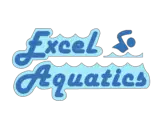With the unprecedented situation of all pools being shutdown across NYS, swimmers have found themselves looking for creative ways to workout in order to stay in swim shape. From band exercises to medicine balls, bodyweight to plyometrics, there are quite a few options out there. However, it’s equally as  important that swimmers understand the factors that go into creating a routine when looking to replace the pool. Here are 5 workout guidelines Excel Aquatics has put together to help all swimmers maintain the highest level of fitness possible during this shutdown, while also improving strength, mobility, and coordination.
important that swimmers understand the factors that go into creating a routine when looking to replace the pool. Here are 5 workout guidelines Excel Aquatics has put together to help all swimmers maintain the highest level of fitness possible during this shutdown, while also improving strength, mobility, and coordination.
-
Functional Movements will give you the most “bang for your buck”
With any type of sport, our bodies follow a kinetic chain when training and competing, so our workouts should be no different. Focusing strictly on specific muscles used in swimming (ie latissimus dorsi) can certainly increase muscle specific strength, and can be great for supplementing swim training (ie in addition to being in the pool), but when looking to replace swimming, it is important to look at how our bodies connect movements, and therefore groups of muscles. Connecting movements that stem from the core, incorporate multiple planes, and challenge the collective muscles used in swimming will allow us to maximize each workout and maintain the highest level of “swimming fitness” possible.
-
Enhance your swimming knowledge as much as possible
In order to apply functional movement training to swimming, we also must understand swimming as a sport. Major takeaways are that swimming is rhythmic in nature, it is a “full body” exercise in terms of the balance created by being a mass suspended in fluid, it is core driven, requires coordination from a kinesthetic awareness standpoint, and requires a high degree of mobility. Any functional movement exercises chosen to replace swimming should keep these key points in mind, with the goal if hitting as many of these points as possible throughout the routine. -
Layout your options for training
With gyms also being shutdown along with pools, it is extremely important to be realistic when creating a routine. The equipment you have access to, the space you have to workout in, and where you thrive as an athlete are all areas to take into consideration. Creativity is key here, and making the most out of what you have available to you will allow you to have the highest degree of effectiveness in your workouts. -
Structure a routine and keep asking why
Just like we have consistencies in our swim training (days of the week, duration, etc), look to create those same consistencies in your dryland training when replacing the pool. Look to cycle through the same exercises multiple days per week so you can see improvement (strength, mobility, or any other metric) to stay motivated, and choose exercises that can be broken down from simple to complex (ie progressions). Finally, don’t be afraid to ask questions on the exercises and look for answers; the more you understand, the easier it is going to be to challenge yourself and benefit from each workout you complete. We have added our sample routine HERE, utilizing a medicine ball, body weight exercises, and a jump rope. -
Be grateful and take advantage of your time away from the pool
Although the current situation is not ideal, chances are if you are reading this post, you are able to workout. The ability to exercise is AWESOME, and something that many times we all take for granted. If we focus on the gratitude that comes with being healthy enough and able to workout, it allows us to enjoy the process and make the most of the situation. Additionally, having the time away from the pool can also help us focus on inherent weaknesses that we tend to neglect, which can help set us up for success once the pools reopen.
Interested in learning more about Excel Aquatics’ recommendations on dryland training for workouts? You can download a digital copy of the slides used in our video presentation here: Dryland Training Considerations for Swimming. Questions? Email us today at info@goswimexcel.com!
